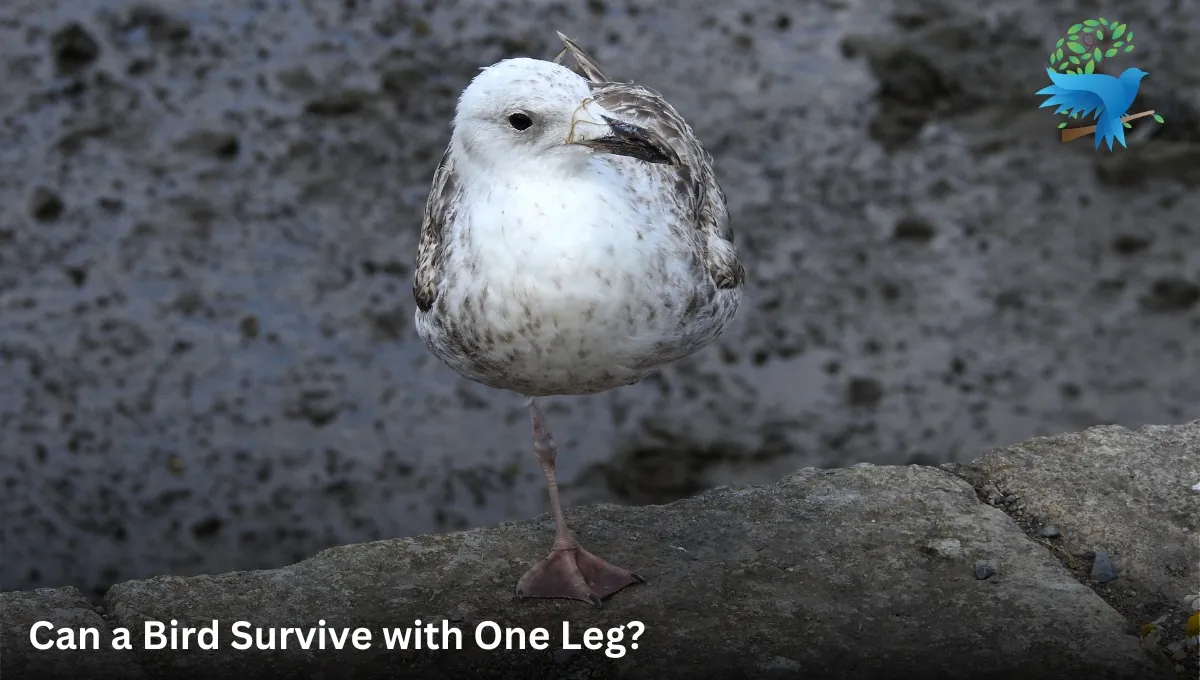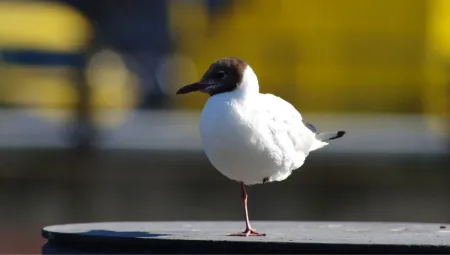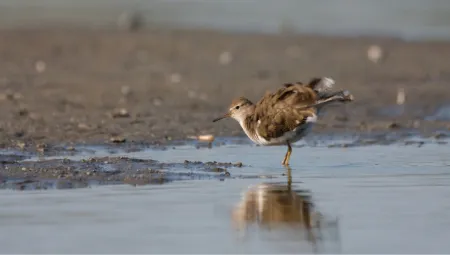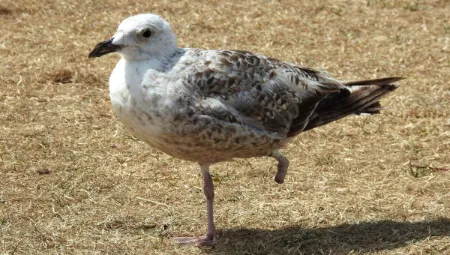Can a Bird Survive with One Leg?

Birds, known for their elegance in the sky, are a source of wonder for many. But what if a bird is faced with the daunting task of living with just one leg? After all, how can they possibly hunt, fly, and perch with just one leg?

This intriguing question sparks curiosity among numerous observers. Today will journey into the captivating realm of avian resilience to investigate if a bird can truly endure with a single leg.
Importance of Legs for Birds
Legs are of paramount importance to birds. They serve multiple functions such as locomotion, perching, hunting, heat conservation, and protection. Birds use legs for various forms of movements including walking, running, hopping, and climbing.
Their legs and feet are also adapted for perching on branches. When it comes to hunting, legs play a vital role in navigating different terrains or surfaces, like sand and water. Birds legs also have an adaption called “rete mirabile” that minimizes heat loss, which is crucial for survival in harsh climates.
Lastly, the legs and feet of birds are covered in scales, which protect against abrasion and injury. Therefore, bird legs are not just for mobility but are essential for their survival and adaptation to their environment.
Adaptations and Abilities of Birds
Birds with one leg display a remarkable resilience and capacity to adapt, utilizing diverse coping mechanisms to survive in the wild or captivity. Here are some of the key adaptions and abilities:
Strength, Balance, and Resourcefulness
Birds with one leg show an amazing ability to adapt to their new circumstances, demonstrating remarkable strength, balance, and resourcefulness. They can still fly, perch, and even hunt food using just their remaining leg.
Specific-Specific Adaptions
The specific outcomes and survival rates can vary depending on the species, the birds age, and the circumstances of the loss of the limb.
For example, perching birds with built-in locks in their tendons have an easier time maintaining balance on one leg while resting. Water birds, which rely more on their wings for swimming, have less need for well-functioning legs.
Use of Wings or Breaks to Find Food
Some one-legged birds have been observed balancing on their remaining leg while using their wings or breaks to find food.
Support from Fellow Flock Members
From changes in their physical movements to support from fellow members, these birds prove that life goes on even with a significant physical challenge.
Read More: Discover the Top 7 Bird Watching Locations in the USA >>>
Challenges Faced by Birds with One Leg
While it is certainly true that birds with one leg face several challenges in their daily lives. Some of the challenges are:
Strain on the Remaining Leg
Birds that lose a leg have to rely on their remaining leg for perching and mobility. This places significant strain on the bird’s remaining leg, often resulting in balance problems.
Difficulty in Acquiring food
For species that rely on their legs for acquiring food, such as shorebirds, losing a leg can be particularly challenging.

Some one-legged birds have been observed balancing on their remaining leg while using their wings or break to find food.
Courtship and Mating
Birds often lose their mates or have more difficulty finding a partner, particularly if the species courtship display requires both legs.
Increased Vulnerability
Due to their reduced mobility, birds with one leg may be more vulnerable to predators.
Environmental Challenges
Depending on the birds habitat environmental factors such as cold weather can pose additional challenges. For example, birds often rest on one leg to conserve heat.
Success Stories of Birds with One Leg
Indeed, the resilience of birds, especially those with one leg, is truly inspiring. Here are a few examples:
- Mandy the Flamingo: Mandy, a flamingo at the Adelaide Zoo in Australia, lost her leg due to an infection. Despite this, she learned to balance on one leg and continued to live a full life for over two decades.
- Stumpy the Swan: Stumpy, a swan in the UK, was born with four legs, two of which were non-functional and had to be amputated. Despite his unique condition, Stumpy lived a normal life and even found a mate.
These stories highlight the incredible adaptability and resilience of birds. They serve as a reminder that life can continue in the face of adversity and that challenges can be overcome with determination and perseverance.
These birds truly embody the spirit of survival and resilience. They inspire us to face our challenges with courage and determination.
Tips for Helping Birds with Disabilities
As caretakers of our ecosystem, there are ways in which we can aid birds that have disabilities:
Creating Bird-friendly Environments
This involves setting up spaces that cater to the needs of disabled birds. Providing feeders and water resources that are easily accessible can help these birds get the nutrition they need. Safe nesting spaces are also crucial, as they provide a secure place for birds to rest and breed.
Supporting Conservation Efforts
Many organizations work towards the conservation of birds and their habitats. Supporting this organization can contribute to the overall well-being of birds. This can be done through donations, volunteering, or even spreading awareness about their work.
Rehabilitation Centers
These are specialized centers that provide care for injured or disabled birds. They have trained professionals who know how to handle and care for birds with various types of disabilities. Supporting these centers can help ensure that more birds receive the care they require.
Conclusion
To sum up, the ability of a bird to survive with one leg is confirmed without a doubt. Although it poses difficulties, the bird’s adaptability, resilience, and willpower allow many of them to flourish even with their physical constraints.

Also, Birds impressive survival skills, strong instincts, and persistent determination enable them to live and thrive despite losing a leg.
As stewards and observers of our environments, we should value and aid these extraordinary beings, guaranteeing they have the chance to fly high despite life hurdles.
References
- Available at: https://birdograph.com/can-a-bird-survive-with-one-leg/
- Available at: https://sociosprint.com/can-a-bird-survive-with-one-leg/
FAQ
Can a bird survive with one leg?
Yes, birds can survive with one leg. Despite the challenges, birds with one leg demonstrate remarkable adaptability, strength, balance, and resourcefulness. They can still fly, perch, and even hunt for food using their remaining leg.
What are some adaptive behaviors exhibited by birds with one leg?
Birds with one leg adapt by balancing on their remaining leg for perching and mobility. They use their wings or breaks to find food. Some birds, like flamingos, have built-in locks in their tendons that help them to maintain balance.
What are some examples of birds that can survive with one leg?
Birds like the Eurasian woodcock, the American woodcock, and the northern lapwing can survive with one leg. They adapt by tucking their non-functional leg against their body while fighting. This allows them to maintain balance and continue flying normally.
Can a bird regrow its lost leg?
Birds cannot regrow lost legs. Their bones can heal when properly splinted, but the regeneration of missing claws remains uncertain. The extent of claw regeneration capabilities may vary among species.






